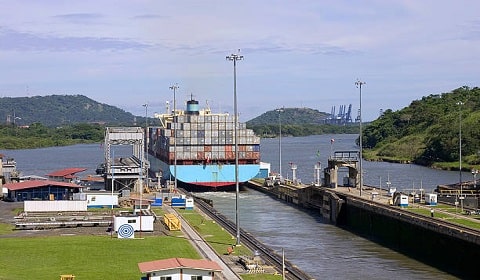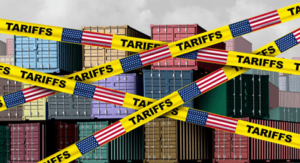
Panama Canal Drought Crisis
Panama Canal drought crisis poses an imminent threat, restricting vital maritime trade routes. The waterway’s lifeblood wanes, endangering global commerce and ecosystem equilibrium. Its profound impact reverberates across industries, demanding urgent measures to mitigate repercussions.
This crisis sparks collective concern, urging innovative solutions and international cooperation. Amidst adversity, it prompts heightened awareness of environmental vulnerability and the imperative for sustainable practices. Resilience and collaborative action become pivotal in navigating this crisis, ensuring the vitality of the Panama Canal and its enduring significance in global trade.
Both the Panama Canal and the Suez Canal serve as economic lifelines, facilitating global trade by significantly reducing travel distances for maritime cargo. They streamline shipping routes, cutting costs and time for transporting goods between major world regions, crucially impacting international commerce and fostering economic growth worldwide. But Suez crisis by the Israel-Hamas war are seriously impact world economy now. So tensions are grown up.
Table of Contents
Panama Canal Drought Crisis:
The Panama Canal drought crisis signals imminent vessel reductions, triggered by exacerbated drought conditions fueled by El Nino. Beginning with a cut from 29 to 25 ships daily, the reduction pattern steeply descends, hitting 18 ships by February. This plunge, a 40%-50% capacity dip from the standard 34-36 daily transits, foreshadows severe logistical implications.
The Panama Canal Authority’s proactive measures aim to navigate this crisis, yet the substantial decline in daily transits forecasts critical disruptions in global trade routes, urging heightened contingency strategies to mitigate economic repercussions and ensure sustained maritime operations amidst this pressing environmental challenge.
1. Drought-Induced Vessel Reductions:
The Panama Canal drought crisis has spurred the Panama Canal Authority into action, implementing phased vessel reductions amid an exacerbated drought caused by El Nino. Initially dropping from 29 to 25 ships per day, the reduction will rapidly escalate, plummeting to 18 ships daily by February. This staggering decrease, marking a 40%-50% capacity downturn from the typical 34-36 transits, signifies the severity of the crisis.
The Authority’s strategic response reflects the urgent need to navigate the canal’s limited water resources, emphasizing the gravity of the situation and the critical measures being taken to address this significant challenge.
2. Trade Flow Disruptions:
The Panama Canal drought crisis significantly disrupts global trade, causing shipping container movement delays. Cargo headed for the U.S. East Coast faces substantial setbacks, impacting ports like the Port of Charleston.
These prolonged delays disturb supply chains heavily reliant on the Canal’s efficiency, posing challenges to timely deliveries and affecting various industries interconnected through this crucial trade route.
3. Shifts in Shipping Dynamics:
Amid the Panama Canal drought crisis, shipping delays force shippers to reroute cargo. The Suez Canal serves as an alternate path but extends shipping duration by 7 to 10 days, complicating delivery planning despite promised arrival times.
This poses logistical hurdles for timely deliveries, aggravating challenges triggered by the Panama Canal’s transit slowdowns.
4. Diverse Sectoral Impact:
The Panama Canal drought crisis has multi-sectoral ramifications, impacting energy, agriculture, and container shipping. It disrupts crucial trade flows like U.S. LNG exports to Asia and the transportation of goods between the U.S. and China.
The repercussions resonate through vital sectors, stalling operations and intensifying challenges across global trade networks, posing substantial hurdles to commerce and trade relations between key economic powerhouses.
5. Challenges and Adaptations:
Amidst a drought, the canal’s reduced water levels compel ships to navigate at lighter loads. This triggers costly but inventive measures such as offloading containers for land transport. The Canal Authority prioritizes water conservation, striving to uphold existing weight restrictions for ships despite possible additional transit cutbacks.
The drought-induced predicament forces adaptation, prompting innovative solutions while emphasizing the imperative need to preserve water resources. Balancing financial burdens with environmental sustainability remains central as the authority navigates through the challenges posed by the ongoing drought to maintain operational integrity and ecological responsibility.
Conclusion:
The Panama Canal’s significant role, managing 40% of the US container traffic worth $270 billion yearly, highlights the pressing need to tackle the crisis sparked by a severe drought. This environmental challenge intensifies the call for proactive steps to navigate water scarcity impacting the Canal.
It prompts stakeholders to reevaluate global trade pathways and adjust to the dynamic complexities in maritime logistics. The urgency to address this evolving issue is crucial, emphasizing the necessity for immediate action and innovative strategies to sustain the Canal’s vital role in international trade amidst changing environmental circumstances.





